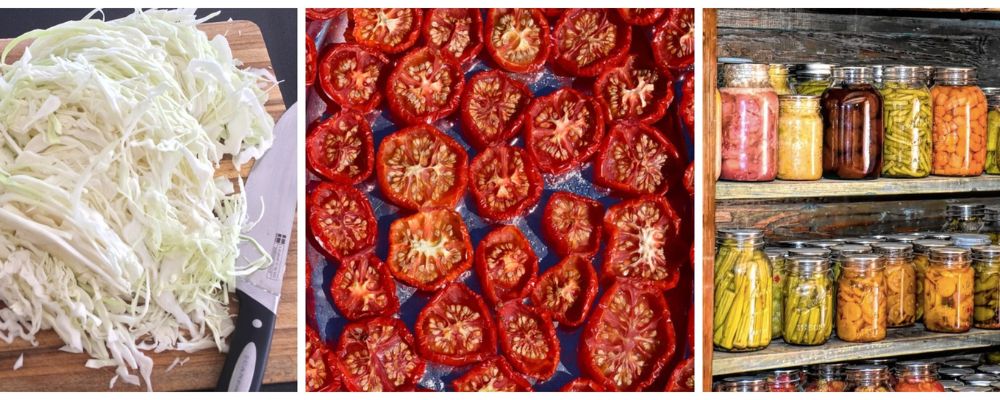
How to Plan Your Garden for Canning and Preserving
— By Kate McCarty, Food Systems Professional, University of Maine Cooperative Extension
Planting a Preserving Garden
Early spring is a great time to plan your garden for the upcoming season. This year, plan to grow a little extra so you can preserve fresh vegetables for later use. Plan ahead and plant vegetables that are easy to can and freeze, like cucumbers for pickling, tomatoes, and green beans.
To decide what to grow, think about what you/your family likes to eat, what is expensive to buy at the grocery store, and what you normally buy that you can grow and preserve instead. In the spring, purchase seeds or seedlings from your local garden center or farmers’ market and watch your harvest grow. SNAP recipients: did you know that you can purchase seeds and seedlings with your SNAP benefits? It’s true!
Tomatoes
Tomatoes are great for canning or freezing whole, cut into pieces, or as a sauce. In Maine, tomatoes need to be planted as seedlings in order to produce fruit before the first frost in the fall. Buy a paste or sauce tomato variety from the garden center or farmers’ market. These varieties, often called San Marzano or Roma tomatoes, have thicker skins, which makes them easier to peel, and have less water in the flesh, which makes for a thicker tomato sauce.
Cucumbers
Cucumbers can be planted from seed and are especially fun to grow with kids. For best results when canning, plant a pickling cucumber variety—these cucumbers have thicker skins and less water in the flesh, which will result in a crispier pickle. Salad or slicing varieties are not suited for pickling. These varieties will produce limp, soft pickles that are not good for eating. Pickling cucumbers can also be eaten fresh in salads or as a snack.
If you’re not ready to take the leap to canning your own pickles just yet, refrigerator pickles are a safe and tasty alternative—follow our guide to making your own refrigerator pickles for a quick and easy project.
Green Beans
Green beans can also be planted from seed in Maine. Grow extra green beans to freeze or pickle with garlic and dill to make dilly beans. Purple beans are fun to grow, but be aware that they lose their color when cooked.
Herbs
Herbs add flavor to your cooking and preserving, and growing your own at home is a great cost saver. Plant dill, oregano, basil, cilantro, and garlic for use in homemade pickles, salsa, and tomato sauce. Herbs can be grown from seed or seedlings either in the garden or containers. Fresh herbs can be used fresh in place of dried herbs in a canning recipe or can be dried to store and use as needed. Herbs are easy to dry—either by hanging to air-dry or using the microwave to dry small amounts of herbs.
We recommend you start small, see how it goes, and incorporate what you learn into your garden planning next spring. We’ve seen too many enthusiastic gardeners plant too much produce and get overwhelmed come harvest time. While every year in the garden is different, with a little planning in the spring, you’ll lay the groundwork for a successful season of canning and preserving your garden harvest.
Resources
- Food Preservation (UMaine Extension)
- Let’s Preserve: Refrigerator Spring Pickles (UMaine Extension)
- National Center for Home Food Preservation (University of Georgia)
- USDA Complete Guide to Home Canning (USDA)
- Garden & Yard (UMaine Extension)
- What Can SNAP Buy? (USDA)
